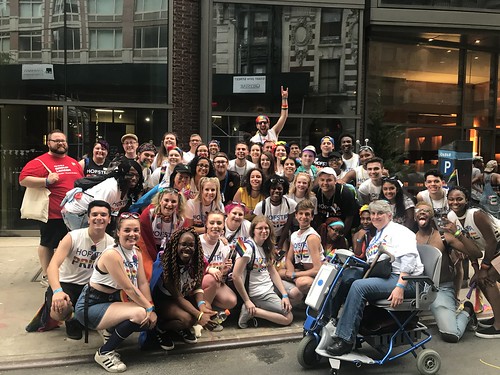LGBTQ+ Studies Program and Hofstra Cultural Center present
Queer Iconography: Third Annual LGBTQ+ Symposium
Dr. David A. Powell, Director, LGBTQ+ Studies Program
Do “icon” and “iconography” cohabitate in the queer world? When and where does the queer iconography of the ancient world shape contemporary codes and symbolism? How important is this symbolism to our culture? How much, how often does it change? Does it belong to a (lost) encoding that is no longer relevant? These are some of the questions we’ll contemplate in the 3rd Annual LGBTQ+ Symposium at Hofstra University.
Gay icons are frequently a topic of discussion in queer circles, especially in the frequently evoked but highly disputed debate on the generation gap between Stonewall-era gays and 21st-century queers. The facility with which gays and lesbians move between pop cultural icons and emblematic iconography often attests to the oft-touted camp sensitivity of the “LGBTQ+ world”. Many consider this phenomenon a staple of the gay community, where only the referents change with the shifts in pop culture; others insist that there is no constancy in either rate or type of symbolism, rather that it depends on individual culture and education. The ontological arguments that privilege a mythology of encoding, encryption, secrecy, and secret society may require some adjustment in the 21st century.
What follow are some suggestions to stimulate your minds and maybe more. Please do not, however, feel constrained by these rubrics; we are eager to encounter original topics and panels.
Queer Iconography and Iconology
Semiotics of Queer Iconography
Greek, Roman, Persian, Byzantine, Christian Queer Iconography
“Whores” and “Icons”
“Cowboys Are Frequently, Secretly Fond of Each Other”
Is There a 21st-Century Notion of a Gay Icon?
Queer Iconography in Literature and Film
Gays in Comic Books/Gay Superheroes
Queer Iconography in Advertisement
Queer Iconography and the Media
Rhetorical Queer Iconography
Gay Iconography and Madison Avenue
Judy, Bette, Marlene, Callas, Barbra, Cher, Liza, Madonna, Aguilera, et al.
Billie Jean, Martina, k.d., Melissa, Marlene, Indigo Girls, Lily Tomlin, et al.
Warhol, Hockney, Lebowitz, Haring, Mapplethorpe
Nureyev, Diaghilev, Nijinsky
Drag as Icon: Kiki, Lipsyncha, Lady Bunny, et al.
“Closeted” Icons


